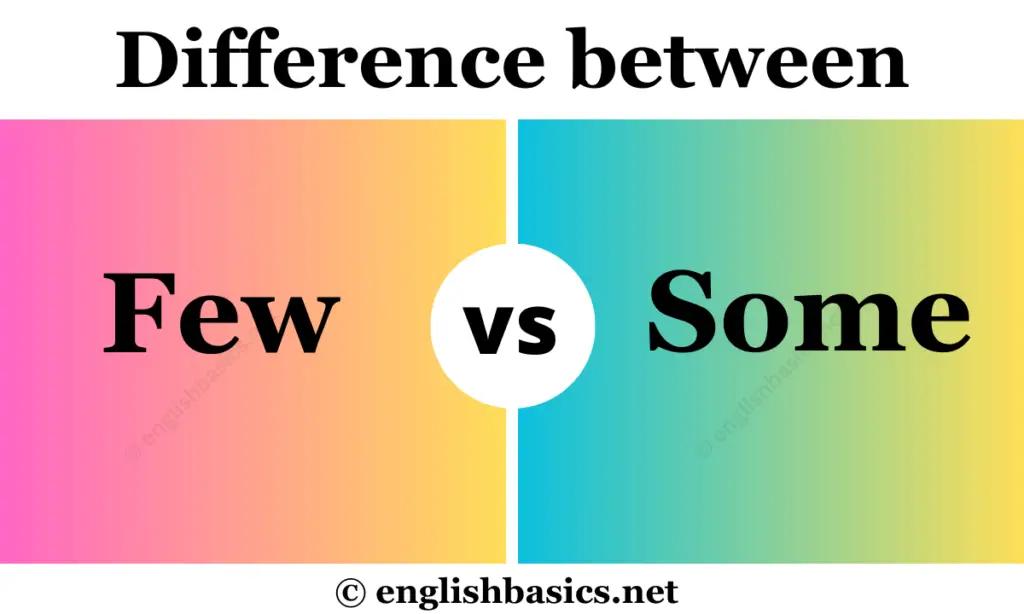The words “few” and “some” can sometimes be complicated and confusing. Many people tend to interchange while using them as they almost hold the same meaning. But one should realize that they can be similar but not the same.
“Few” and “some” are quantifiers and determiners that generally indicate something small in number. While they are both applicable when referring to a small collection or basically a plural number, their usage has some differences.
Let us discuss them and understand where exactly they stand and how.

Few vs Some – Difference
Few
The word “few” is a quantifier and determiner that we generally use when we are referring to a small mass. It is used to show a vague quantity of something lesser in number.
“Few” is used with countable nouns. It indicates a small number of people or things that can be counted and separated.
For example:
- He had a few books.
- I asked a few questions.
- She had few dresses.
We see “few” indicates an unknown number of nouns that are less in quantity but are countable.
Some
“Some” is also a quantifier and determiner. It is also usually used to determine a small amount of something. It shows a vague and unknown quantity of something which is in small number.
However, “some” is different from “few” because “some” is used with both countable and uncountable nouns. It indicates a small amount of something that cannot or can be counted or separated into numbers.
For example:
- Can I get some water?
- Please, give me some chocolates.
We see it can either be uncountable or countable.
Main difference between Few and Some
The word “few” is generally an indication of mostly less or hardly any. And it is usually used to determine something lesser than someone expected or wished. However, “some” refers to something more than “few” and less than many. So, in the hierarchy, “some” is placed above less but below more.
In simple language, we can understand that “few” is a number between 1-5, and “some” indicates a number between 5-10.
Another major difference between the two is their function as a response and their meanings. To be more precise, “few” is basically used negatively. When one talks about something less than they expected, they use “few.” It is portrayed in a negative way.
On the other hand, “some” is used when one is referring to something in a positive way. When one talks about something that is less in number but enough, they use “some”. It is a positive connotation.
Other than these common uses, “some” can also be applied as nouns, adjectives, and adverbs. However, this also applies to the “few”.
So we notice that both “few” and “some” are very similar to each other. But some minor differences give each a distinct and separate identity. Depending on the sentence, both words may act the same. But remembering their differences and applying them where needed is always safe.